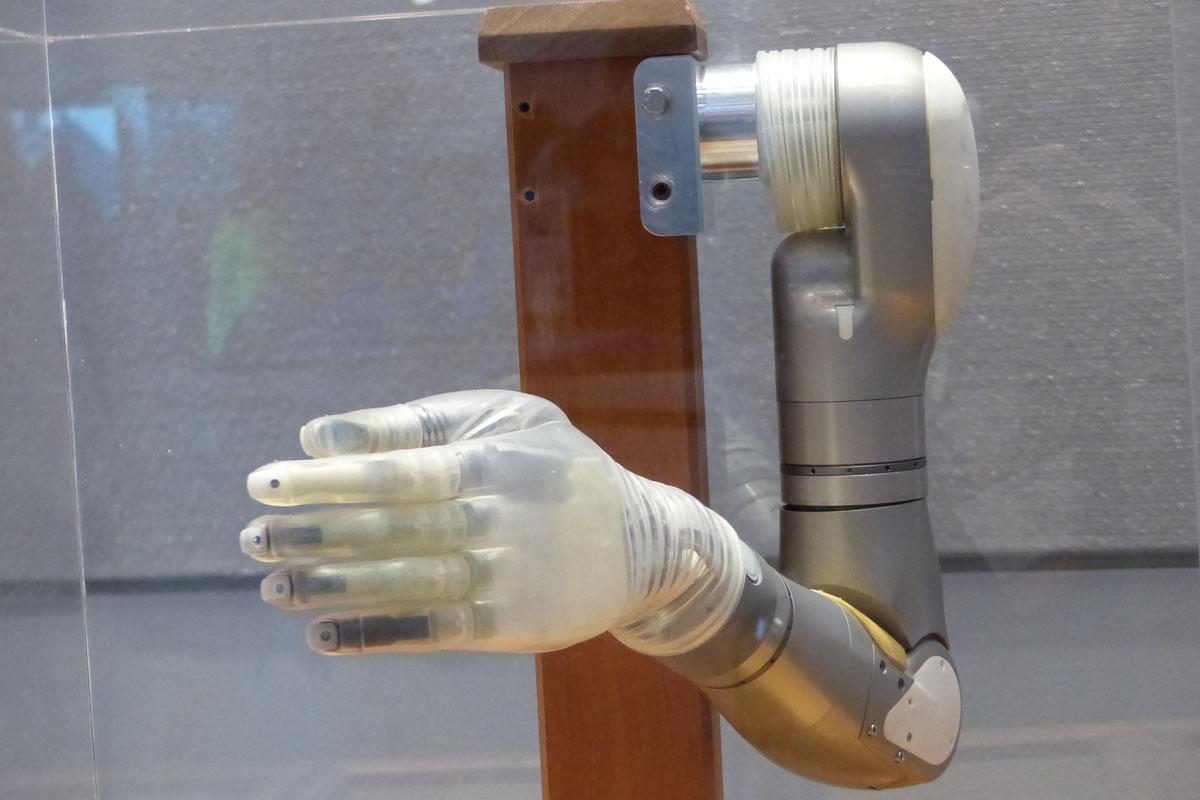Y: Don, do you remember the scene in Star Wars: The Empire Strikes Back where Darth Vader cuts off Luke Skywalker’s right hand?
D: I do Yaël. You know I’m a big Star Wars fan. They have the technology to give Luke a robotic replacement hand that is as good as new.
Y: That’s right, and that scene inspired a team of university and private American researchers to develop a real life prosthetic robot arm called the LUKE Arm. The hand has robotic fingers that move partially independently, and its key feature is that it links directly to the amputee’s muscular and nervous systems.
D: Wow! Does that mean the user can control the hand with their thoughts, just like they would with a real hand?
Y: Yes, they can. The system includes an array of tiny wires that record muscle electrical activity in the user’s upper arm. The user learns to control the hand by controlling these muscle electrical signals.
D: But there’s a problem, Yaël. When we control our hands, we rely on the sense of touch for feedback.
Y: To address that problem, the LUKE arm provides the user with a rudimentary sense of touch. Past researchers tried to do this by using electrodes to directly stimulate the part of the brain that controls touch. But this requires risky brain surgery. The designers of the LUKE arm succeeded in creating touch sensations by stimulating peripheral nerves in the user’s arm. This was a hard problem that involved mimicking the signals that a real hand sends the brain. It’s a good first step toward Luke Skywalker’s hand.










